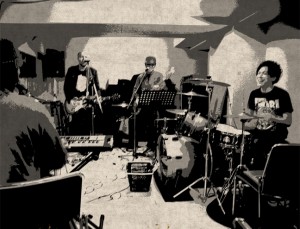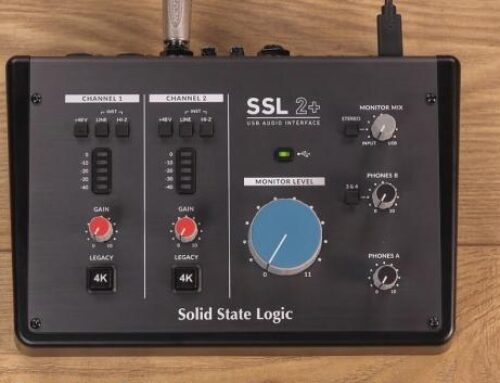By Michael Beinhorn
A few months ago I met with a band who were planning their next recording.
We began discussing time frame and logistics in order to figure out how their time and money would be best spent. At some point in the conversation, I casually enquired about how many days they had allotted for pre-production. Slack-jawed and confused, to a man, the band and their management all stopped speaking and stared at me as if I’d just recited a sonnet in Ancient Greek.
“Pre-production? What’s that?”
Over the past 10 years, I’ve become increasingly surprised by how many artists are ready to waltz straight into a recording studio without doing pre-production or prep-work. Still more surprising is how often people who comprise the support teams of many artists––such as managers, A&R, publishers, even some record producers––completely ignore pre-production because they figure it’s unnecessary or a waste of time.
A Few Basic Premises
Actually, pre-production is one of the most essential stages of a recording project—perhaps the most essential. I see it as an insurance policy which guarantees that every aspect of every song I’m producing will be functioning properly (and the band/artist will be performing them as flawlessly as possible) by the time recording begins.
I can summarize the process of pre-production by breaking it down into four parts: analysis, discovery, revision and implementation/rehearsal. First, the music is analyzed; through that analysis, flaws are discovered; through discovery of these flaws, repairs are made and through rehearsal, the repairs are implemented and the music is improved.
As well as improving an artist’s music, pre-production helps direct him to work methodically and, thereby, smarter. By introducing organization into the creative process––which, by its very nature, can be highly disorganized––pre-production saves time on a recording project (which also means saving money, and that is especially beneficial for artists with small budgets).
It also provides an opportunity for the artist(s) and the producer to work together under “real world” conditions, instead of initializing their working relationship in a recording studio. This approach tends to set a better tone for the rest of the project.
Of course, the pre-production process can be difficult and even awkward at times. There’s nothing comfortable about having your babies––the fruit of your creative womb––rent asunder by someone you barely know and don’t yet fully trust.
However, the objective examination of your material prior to recording is also a necessity. In over three decades of producing records, nearly every artist I’ve worked with has acknowledged that the pre-production work we did played an essential role in taking their work to the next level. Most of the recordings I’ve produced––such as Soundgarden’sSuperunknown––wouldn’t even exist in their present forms without extensive pre-production. And that is the end result that always justifies the means.
Analysis and Discovery
Since I’m producing the artist’s music, I need to know it intimately. By listening to the artist’s demos, I develop an impression of the material and of the artist as a creative individual. This means I have to be everything from a songwriter to an arranger, to a psychoanalyst.
I listen to all the music we will be recording, as well as previous work the artist has done (including material he may have that is in various states of completion). All of this gives me greater insight––as well as context––to the music—and the artist. By simply being aware of how the music is making me feel as I listen to it (whether that’s good, bad or indifferent) the impressions I form about it come naturally.
The listening process initiates an internal dialog in me. That internal dialog involves questions such as:
- What do I feel is the artist’s intent?
- What is he saying––or trying to say––through his songs?
- How does he project himself into his songs?
- Am I getting a complete sense of who he is, or is something missing/being hidden?
- What is this artist’s strongest asset?
- What is he best at?
- What is his weakness?
- Does he rely on his strongest or his weakest asset to express himself musically?
I also start keeping notes that include my thoughts about the material (and fixes for problems I’m encountering), as well as the internal dialog and any additional impressions I may have. I also keep notes about how the band play together and how they use instrumentation to facilitate (or impair) each song. All these notes become an initial jumping-off point for the work we will be doing in pre-production.
I also make a habit of checking in with the artist to share my ideas, so he can start applying some of them to his songs. Initially communicating one on one is sometimes more relaxed than doing this while surrounded by a group of people in a rehearsal room. This makes it easier for the artist to feel comfortable with me and thereby, more receptive to input.
After a few weeks of prep-work, we are ready to begin pre-production.
Working With the Material (Revision)
Pre-production is always most effective when the artist/band shows up with songs as finished and rehearsed as possible (regardless of any changes that will be made to them). This may seem obvious, but some artists avoid addressing loose ends in their material (occasionally, until well into the recording process).
As an example, when I began producing Untouchables for Korn, they had over 40 unfinished song ideas––nearly all of which were unusable. Inevitably, we scrapped everything, started over and the band wrote the entire record during a very lengthy pre-production that lasted seven months(!).
The revision process in pre-production is an extrapolation of the analysis and discovery I initiated while prepping the record. The artist/band and I start reviewing my notes regarding song fixes and ideas to be auditioned.
The artist/band also discuss their feelings about the songs. Every question and uncertainty about each song is addressed and we must all agree that we are satisfied with whatever solution we have arrived at before moving on.
As a group, we begin peeling back layers of the music to reveal what’s at the core, deconstructing everything in order to see how it all interacts and then, gradually replacing those layers while reintegrating the structure into a far better state than when we began. We examine everything; we see what works and we change—or eliminate—what doesn’t.
Songs are interesting creatures, as are song structures. You always know when a song structure is working, because you’re not paying attention to the structure—you’re listening to the song. However, when a song structure is problematic, you can’t focus as easily on the song because the structural issues affect the song flow.
You may have a song with great parts or sections, but if they are structured poorly your great parts will be rendered meaningless. My experience is, you ignore structural issues in your songs at your own peril. If you don’t address them prior to recording, you will revisit the same issues later when they have become systemic; your options are more limited and your solutions more time-consuming.
When I analyze a song structure, I always consider the following elements. These categories tend to overlap, but I like to keep them separate for the sake of clarity:
1) Song Flow/Arrangement: how the song progresses and how this progression unites the song as a unified, integrated piece of music.
2) Dynamics: how elements develop in the song to maintain a listener’s interest.
3) Orchestration: which instruments are being used in the song and how.
4) Rhythmic Elements: how rhythms in the song interact and reinforce the song.
5) Integration: how all the elements integrate/interact with one another—or don’t.
Digging into the DNA of a song always illuminates it in new and unexpected ways. Hearing a familiar song shift drastically by changing the way it builds dynamically, by altering a drumbeat so it’s more supportive of a vocal line, or by adding a melodic bass line to reinforce and interact with a vocal melody, often gives the artist a new appreciation for his material.
Often, my suggestions encourage the artist to arrive at his own solution to a creative issue. This demonstrates how symbiotic and flexible the artist/producer relationship can be when they work as collaborators. I had such a dynamic when I worked with the Red Hot Chili Peppers. They were competitive and enjoyed the challenge of finding their own solutions to issues in their songs.
As they are revised, the songs gradually become more focused and some of them begin to exhibit weaknesses that cannot be repaired. Generally, these weaker songs simply can’t be improved since their issues are more systemic than symptomatic. At that point, they are usually eliminated.
Honing Musicianship (Implementation)
The analysis, discovery and revision phases of pre-production involve examining songs under a microscope. By comparison, the implementation/rehearsal phase involves examining performance aspects of the songs from more of an overview.
After a few days of doing revisions, the focus gradually shifts more to rehearsing. Depending on the style of music, I start pre-production with a full band. Sometimes, I start only with vocals and one instrument for accompaniment in order to focus exclusively on song structure (and gradually add the rest of the instrumentation to see how everything interacts).
No matter what instrument configuration we begin with, I focus on the rhythm section as early in the process as possible. I feel that quite often, bass and drums are treated as afterthoughts instead of essential parts of a band and I often work with them separate from the other instruments.
Why focus on bass and drums? 1) although often ignored, they are foundational, supportive and propel the other instruments; 2) they potentially provide great rhythmic and melodic counterpoint for the vocal; and 3) I feel they always sound better when played with feel and aggression, instead of being polite and stiff, but spot-on with a click.
People often make jokes about bassists and drummers, but a great rhythm section makes a song come alive. On the other hand, a great song can fall apart when the rhythm section isn’t doing their job. A cursory listen to any Beatles record will thoroughly prove this point.
As I mentioned earlier, when a band comes into pre-production well rehearsed, we are able to implement changes much faster because they are prepared. This also means that we can focus heavily on nuances in their performances, relationships between the instruments, how aggressively the songs are attacked, etc. The musicians are better able to play with more intensity and get the maximum impact from their material.
Sometimes, however, a band is relatively unrehearsed prior to pre-production. When this happens, pre-production becomes a chaotic overlapping of arranging, revising and rehearsing. Suffice it to say, this is never ideal.
Rehearsing consistently makes a performer better at what they do and a better performer guarantees a better performance. Experience has shown me that people always prefer listening to a great performance than a mediocre performance that has been heavily edited.
We who make recordings are quick to believe that average listeners can’t hear any difference; but, believe me—they can tell.
Building Morale
There is also an interpersonal aspect to pre-production (and record making in general). Since creative work often boils down to people working together in a room, it involves relationships. Because I forensically analyze an artist’s creative work (with the consideration that I may have to rip some of it to shreds), the dynamic of my relationship with the artist can be affected.
Generally speaking, people doing creative work in any environment are happy and productive. Conversely, an environment inhabited by a group of artists jointly working on the foundation of a creative project is fragile and potentially volatile.
Along with each individual’s ideas, his ego is also on the table. Depending on a variety of factors, anything can cause the mood in the room to go from cool to boiling hot in a split second. Perhaps one band member doesn’t like a particular song that another one wrote. One band member might become offended by another band member’s flippant comment, or someone had a bad morning prior to beginning work.
In this case, how do I––as the designated driver of this project––constructively handle ongoing interpersonal dynamics? How do I critique an artist without demolishing his confidence? How do I keep everyone in the room happy, working well together, with the same general goal in mind while navigating around any stray agendas that might be detrimental to the project?
Apart from helping hone the artist’s material, my job is to maintain stability. In this aspect, I have to be an office manager, a psychologist, a parent and a traffic cop.
To handle those roles well, I come into pre-production prepared. This starts by knowing all the music and having a comprehensive plan to make it better.
And, to reinforce that, I come in calm and relaxed. In a work situation involving multiple individuals, one person’s mood and state of mind can affect everyone else’s mood (as well as their ability to concentrate); hence, maintaining my calm helps everyone keep theirs.
For this reason, I always make sure to leave my personal issues outside the rehearsal studio door. I also try to meditate prior to starting work.
If there is a disagreement, my responsibility is to maintain a constant overview of the situation. Remaining calm facilitates a better sense of that overview.
I am also conscious of not getting sucked into anyone else’s personal drama. Drama is seductive, especially in a creative environment. However, it serves absolutely no purpose when it manifests in a group of people trying to work. Looking past the cause of drama enables one to maintain clarity.
When I see what is at the root of a specific problem, I parse out all the individual elements that make up the problem and present them to the artist as concrete facts with concrete solutions. I find that people often get frustrated because they are trying to address a multitude of stressful things at once, instead of separating them and dealing with them one at a time. Bringing clarity to a situation makes it easier to defuse.
Providing critique is an essential aspect of my role. When I critique or share ideas with an artist, I keep in mind that the artist may be extremely close and attached to his work; hence, I do it with care. Often, the way information is presented is as important as the information itself.
The most important thing of all is keeping the creative atmosphere positive and upbeat. The best way to do this is to make sure there is a constant sense of progress. Few experiences are better than hearing a familiar piece of music transform, reveal all its potential and recognizing your own contribution to this metamorphosis.
Some Final Thoughts for the Artist
Producing an artist implies that there is a collaboration between the producer and the artist. Even if a producer has written songs for an artist’s project, the artist’s name is still the first thing people identify with that project.
The relationship is symbiotic, not hegemonic. An artist may consistently defer to a producer by choice; however, this is not appropriate if the artist disagrees with the producer or feels compelled to speak his mind.
What you create is based largely on your own creative instincts. Therefore, as an artist, while it is imperative to accept input, it is equally imperative to trust your instincts and to assert yourself when the situation calls for it.
You may find yourself working with a producer, perhaps someone with a lot of credits and success behind him. Things may be progressing smoothly when, suddenly, he drops an idea on you that you don’t like. In fact, it is an awful idea, one that has (at least, in your mind) absolutely nothing to do with the kind of record you want to make.
What do you do?
Obviously, being open-minded and tactful is a lot more valuable to you than being quick to reject the idea without giving it a chance. Since it might help you to understand why he made the suggestion, you can ask him to explain it.
Perhaps, after he has explained his idea, it still doesn’t make sense. In this case, the next step might be to tell him that although you are still unclear about what he’s going for, you are open to trying his idea, but with conditions. The first condition might be that you’ll try his idea, but you might also want to try your own idea in place of his and compare the two. The second condition might be that if his idea doesn’t work––even after living with it for a time—the song will be restored to the way it was.
This way, a potentially difficult situation becomes a reasonable compromise; one free of conflict where everyone stands to win.
One of my favorite quotes is from novelist William Faulkner and it reads, “In writing, you must kill all your darlings.” The killing of your darlings, which in this case might be losing a song part that you love but simply doesn’t work, is one of the most difficult—and transformational––things that you can do as an artist.
Change is difficult, but it is also the essence of pre-production. The less resistant you are to change and new ideas regarding your work, the more fruitful the creative process becomes.
And…
In spite of their misgivings, I managed to convince the band at the beginning of this article that they needed to budget a few days in their schedule for pre-production. They agreed to try it for two days. They were so surprised by how much better their songs became that, at the end of the second day, they insisted on three more days.
By Michel Beinhorn
Reprinted with permission of Music Connection magazine
For more 12th Annual IAMA (International Acoustic Music Awards), visit: http://www.inacoustic.com




